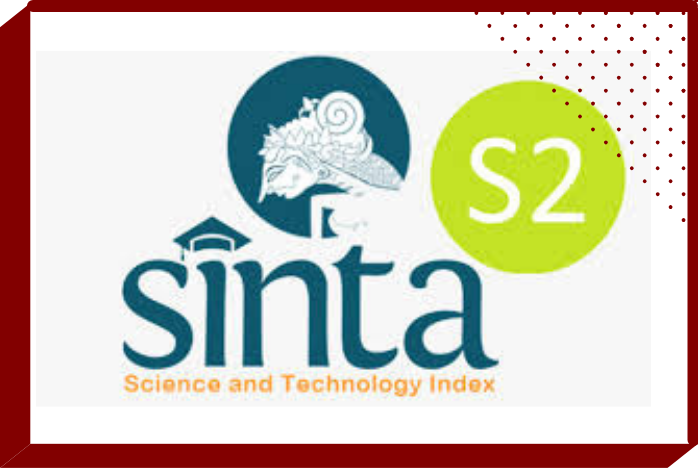Tipologi Abreviasi dan Akronim: Titik Pijak Awal Pemanfaatan Semantik dalam Penyusunan Kamus Bahasa Indonesia
 Abstract views: 769
,
Abstract views: 769
,
 PDF downloads: 873
PDF downloads: 873
Abstract
Indonesian has many vocabularies which have developed more or less according to the user community and their needs. With the existence of an Indonesian dictionary that contains vocabulary and meanings that serve as guidelines, standardization of vocabulary in the KBBI and requires scientific negotiation. Through semantic science which is the basis for its compilation and standardization, with the present dictionary presentation, vocabulary and meaning will be easier to understand. The type of research used in this study is a qualitative research using descriptive analysis. This qualitative method is used by researchers to analyze the data findings. The data’s source in this study is from KBBI V (online). The dictionary will be analyzed for its elements of abbreviations and acronyms. Analysis this study was carried out descriptively which later was expected to be able to find the characteristics, properties, and functions through the selection of the required data. The results of this study found that there are several abbreviations and acronyms found in the KBBI (online). Abbreviations and acronyms found are seen from the process of formation, form, and function. Another existence found by researchers is the use of abbreviations and acronyms as research that can enrich and vocabulary development.
Downloads
References
Adnan, M. S. (2019). Abreviasi pada Berita dalam Surat Kabar Jawa Pos. Belajar Bahasa, 201-206.
Arisanti, Y. L. (2018). Penggunaan Akronim dan Singkatan dalam Media Sosial. LITERASI, 104-112.
Connell, B. (1998). Lexicography, Linguistics, and Minority Languages. JASO, 231-242.
Erniati. (2017). Pola Suku Kata Bahasa Lisabata. TOTOBUANG, 315-324.
Jackson. (2002). Lexicography: An Introduction. 1-141.
Junal. (2015). Bentuk, Makna, dan Fungsi Akronim Bahasa Indonesia. 1-17.
Kridalaksana. (2008). Kamus Linguistik Edisi IV. Jakarta: Gramedia Pustaka Utama.
Khoirunnisa, K. (2021). Pemanfaatan Aspek Repetisi pada Antologi Puisi Sesudah Zaman Tuhan Karya Abi Bayan dan 47 Penyair Nusantara: Suatu Kajian Analisis Wacana. Prosiding Semantiks, 357-366.
Khoirunnisa, K. (2021). Eksistensi Tiang Listrik sebagai Media Berkomunikasi Jarak Jauh: Kajian Antropolinguistik. Riksa Bahasa, 169-174.
Khoirunnisa, K. (2021). Modus Pengungkapan Kegembiraan dan Kesedihan pada Karangan Siswa Kelas 3 dan 5 SD: Kemahiran Menulis Perspektif Psikolinguistik. Seminar dan Lokakarya Kemahiran Berbahasa, 181-191.
Lestari, et al. (2022). Analysis of The Use of Slang Variation by Teenagers in Selokajang Village: A Sociolinguistic Study. Ghancaran, 105-120.
Musaa'adah, Ardian Yulianti. (2019). Bentuk-Bentuk Abreviasi dalam Bahasa Jawa. Leksema: Jurnal Bahasa dan Sastra, 21-27.
Muslikah. (2021). Penggunaan Abreviasi dalam Halaman Facebook Kementerian RI Unggahan Edisi Bulan Januari-Mei 2021. Jurnal Pendidikan Tambusai, 9973-9982.
Parera. (2004). Teori Semantik. Jakarta: Erlangga.
Perez, dkk. (2022). Toward Standard Abbreviations and Acronyms for Use in Articles on Aortic Disease. JTCVS, 6(2), 34-38.
Saputri. (2019). Bentuk-Bentuk Abreviasi dalam Bahasa Jawa. Leksema: Jurnal Bahasa dan Sastra, 21-27.
Sari. (2021). Penggunaan Abreviasi dalam Buku Teks Bahasa Indonesia SMA/SMK/MAK/ Terbitan Kementerian Pendidikan dan Kebudayaan. Jurnal Pendidikan Bahasa dan Sastra Indonesia, 434-446.
Simpen. (2015). Dinamika Pembentukan Kata Bahasa Indonesia. Retorika: Jurnal Ilmu Bahasa, 319-330.
Sirulhaq, et al. (2017). Konsep Pemerkayaan Kamus Bahasa Indonesia dan Politik Bahasa dalam Dinamika Global. Seminar Nasional PBSI FKIP Unej, 1-10.
Sriyanto. (2014). Ejaan: Seri Penyuluhan Bahasa Indonesia. Jakarta: Badan Pengembangan Bahasa Kemendikbud.
Sudjalil. (2018). Tipologi Abreviasi Dalam Surat Kabar Berbahasa Indonesia. Kembara: Jurnal Keilmuan Bahasa, Sastra, dan Pengajarannya, 4(1), 72-85.
Sujarno. (2016). Leksikografi Indonesia: Konsep Dasar, Isi, dan Jenis Kamus. INOVASI, XVIII(1), 49-58.
Suwardjono. (1990). Pedoman Umum Pembentukan Istilah. 1-18.
Tim Penyusun Pedoman Umum Pembentukan Istilah. (2015). Ejaan: Seri Penyuluhan Bahasa. 1-65.
Tim Penyusun Pedoman Umum Penyusunan Istilah. (2007). Pedoman Umum Istilah Edisi Ketiga. 1-65.
Tim Penyusun Peraturan Walikota Tasikmalaya. (2017). Uraian Sistematika Pedoman Penamaan, Singkatan, dan Akronim Perangkat Daerah. Tasikmalaya: Pemerintah Daerah Tasikmalaya.
Verlin, S., Muhammad Darwis, Munira Hasjim. (2018). Abresiasi dalam Media Sosial Instagram. Jurnal Ilmu Budaya, 277-286.
Zainudin, et al. (2014). The Use of Corpus and Frame Semantics in a Lexicography Class: Evaluating Dictionary Entering. ELSEIVER, 2316-2320.
Copyright (c) 2023 GHANCARAN: Jurnal Pendidikan Bahasa dan Sastra Indonesia

This work is licensed under a Creative Commons Attribution-ShareAlike 4.0 International License.
Ghancaran: Jurnal Pendidikan Bahasa dan Sastra Indonesia uses an Open Access Policy under the Creative Commons Attribution-ShareAlike 4.0 International License. Authors publishing in this journal agree to the following terms:
- Ghancaran Journal holds the copyright and grants the journal rights for first publication with the work simultaneously licensed under a

The work is distributed under Creative Commons Attribution-ShareAlike 4.0 International License which allows others to share, copy, and redistribute the material in any media or format and adapt, remix, change, and develop the material even for commercial purposes, as long as it is stated credit and license derivative works under similar terms. - Authors may make additional contractual arrangements for non-exclusive distribution of the journal's published work version.
- Authors are permitted to post their work online (e.g., in institutional repositories or on their websites) before and during submission, as doing so may lead to productive exchange.



















